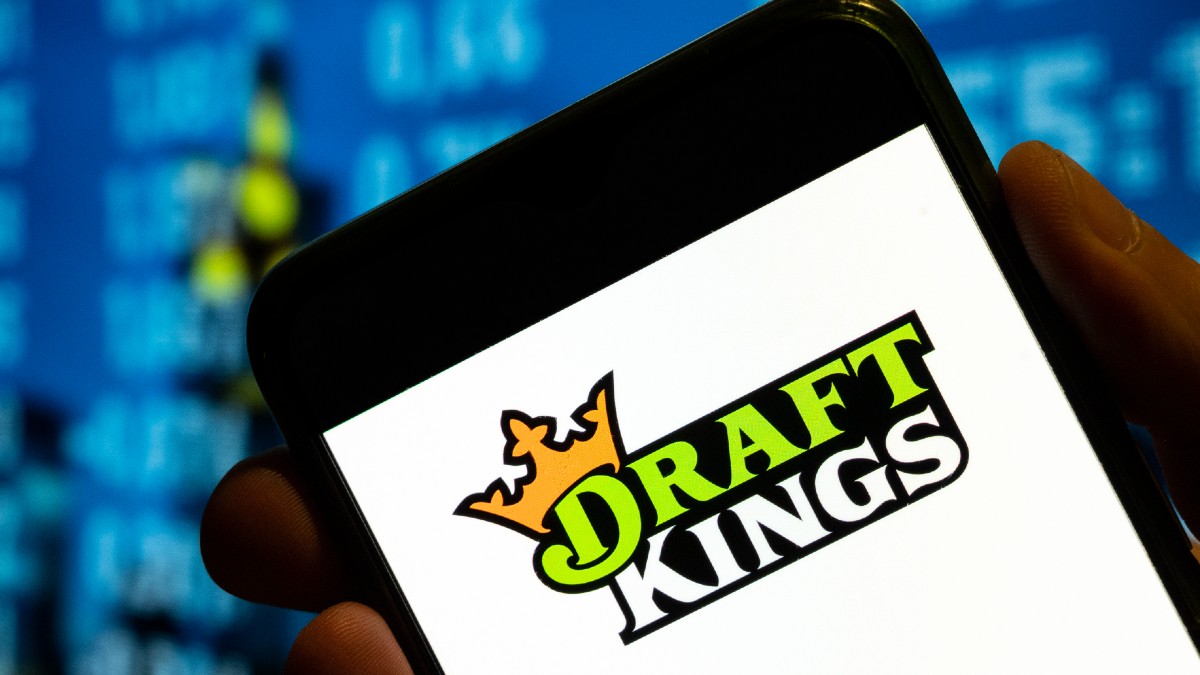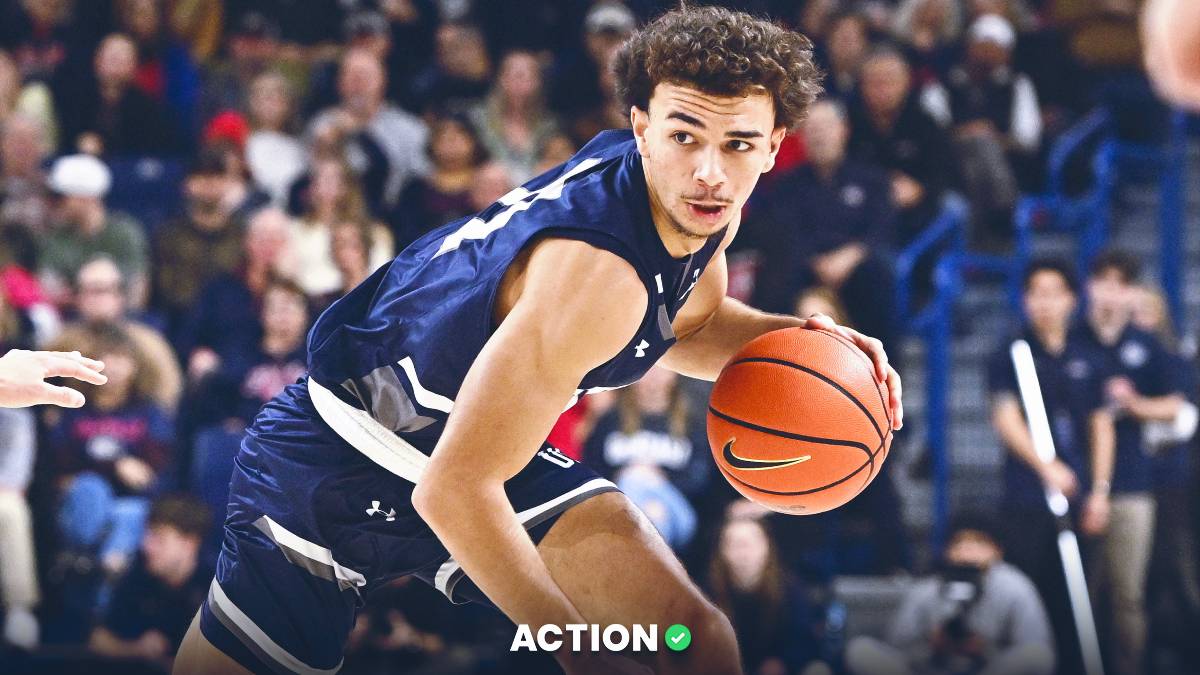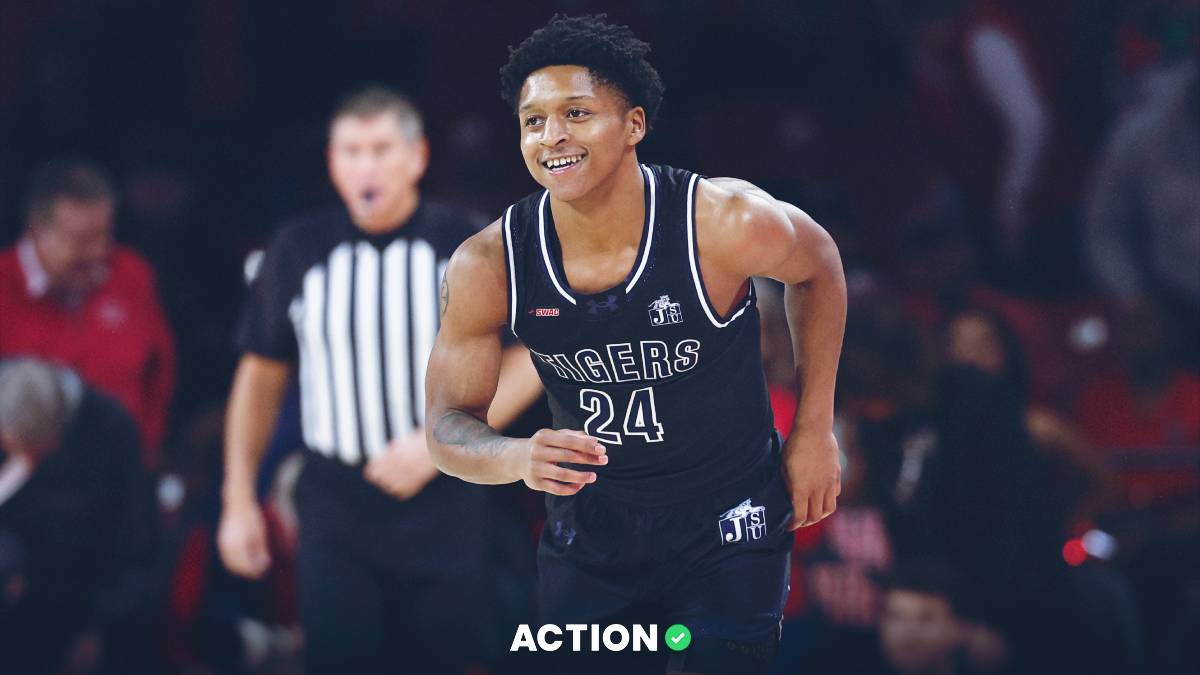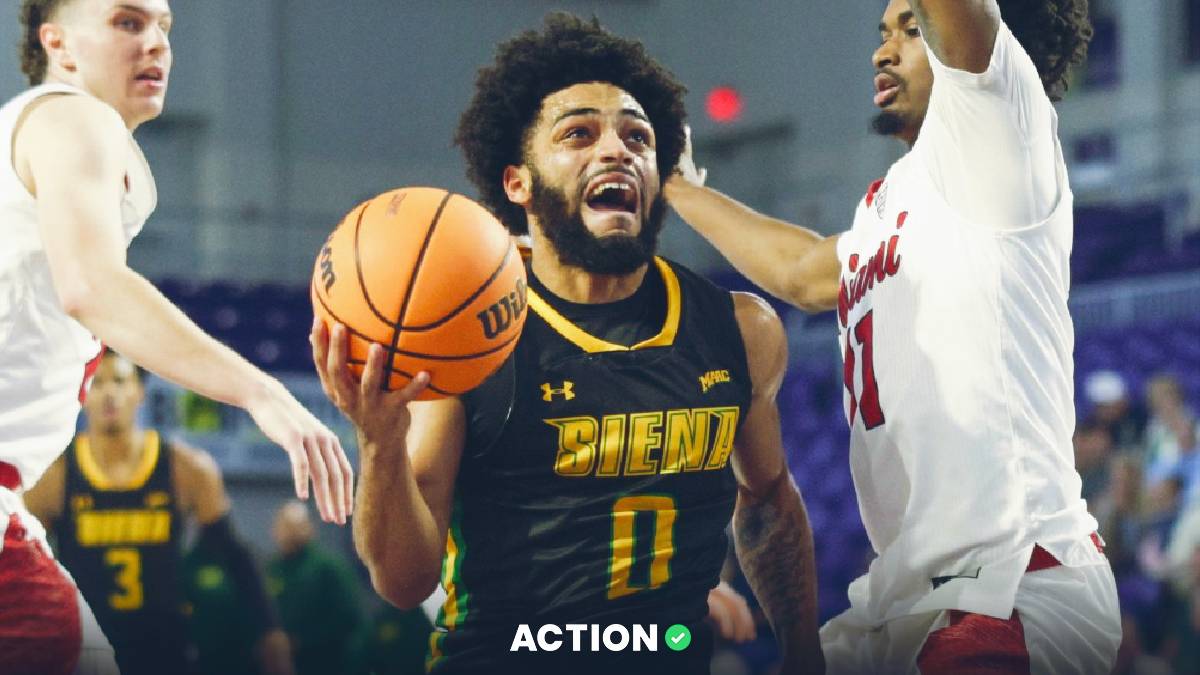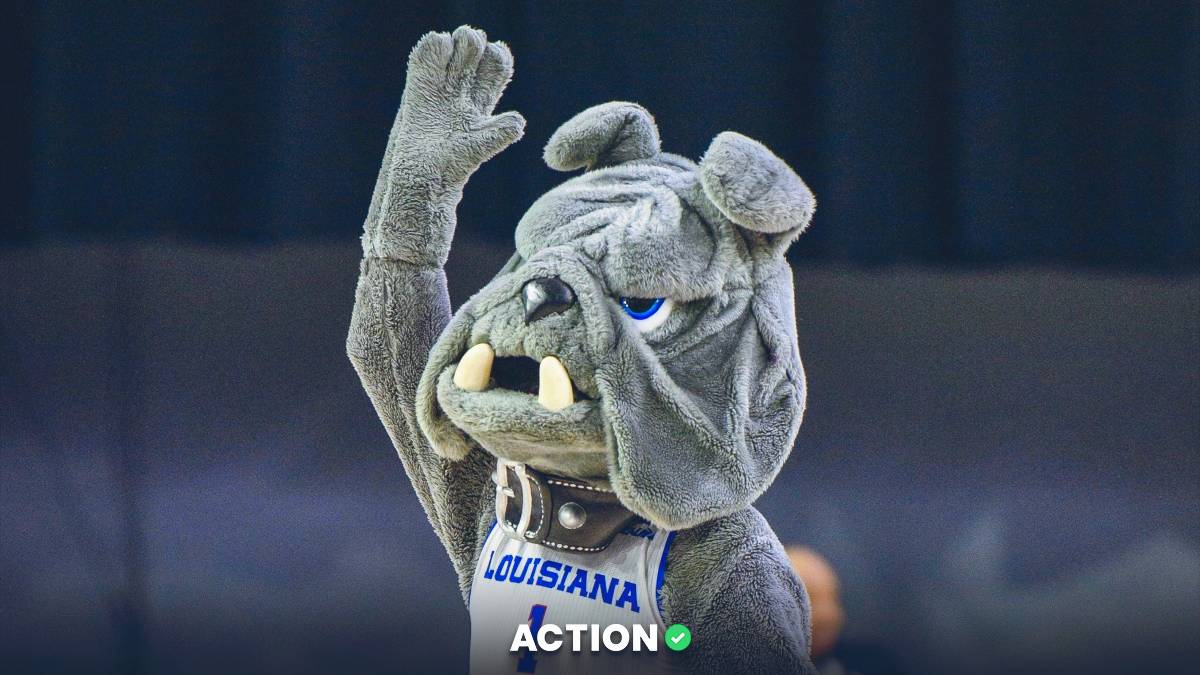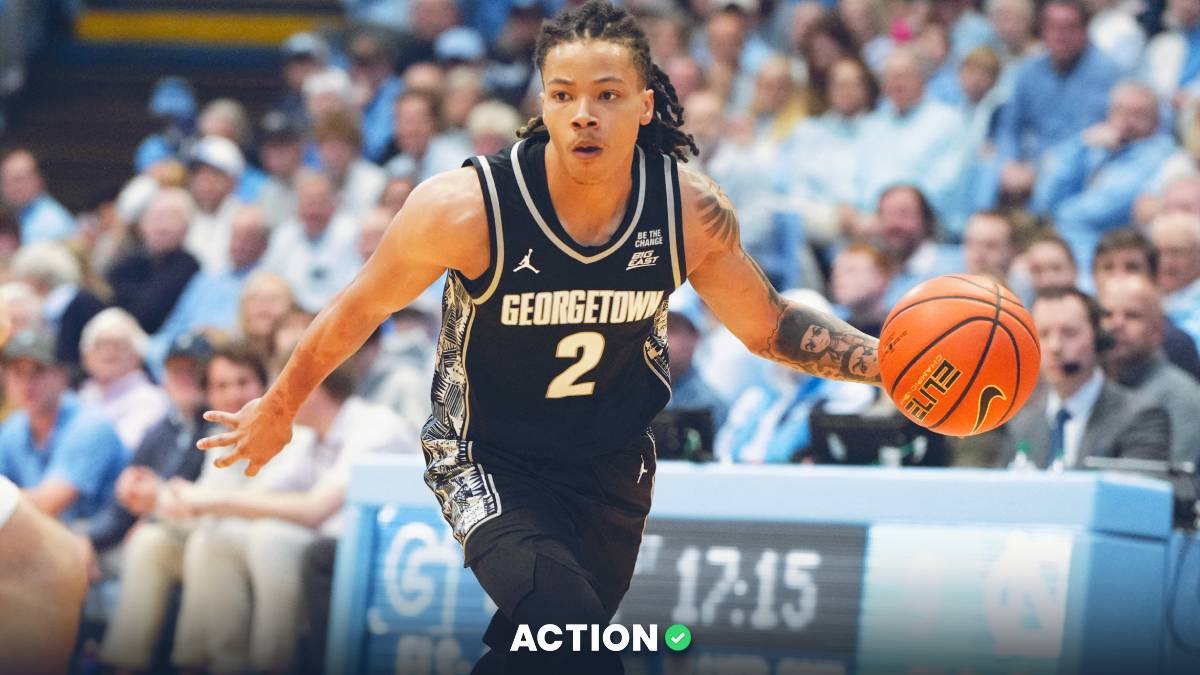Ahead of college basketball's National Championship game on Monday evening, the sports betting world got a reminder of the dangers that lurk within the industry.
On Monday morning, Justin Perri, the betting content lead at Shot Quality, identified a problematic, pre-made same game parlay that was created as a DraftKings promotion.
The same-game parlay, titled "Aztec Lockdown," contained three legs. The first was San Diego State to win, the second was the San Diego State first half spread and the final leg was UConn's team total under 74.5.
In total, the parlay was listed with a +310 price. The issue? At the time, San Diego State's moneyline at DraftKings on its own was +320.
an SGP at +310 that includes a leg that is +320 straight…
Criminal stuff lol pic.twitter.com/YM8Nuaakyw
— Justin Perri (@JustinPerri8) April 3, 2023
The purpose of these same game parlay promotions is for a recreational bettors to receive boosted odds on a wager that has longer odds of winning. Obviously, pricing this wager at +310 is a mistake, if not outright predatory.
DraftKings took down the parlay after backlash, then placed it back online with odds of +400. However, instead of UConn's points under being 74.5, it was moved to 70.5.
On the surface, bettors should understand the disadvantaged nature of same-game parlays. The winning edge on same game parlays — and parlays in general — is massive for the operator.
Sportsbooks have kept, on average, six cents of every dollar wagered over the last 20 years, according to a report conducted by UNLV's Center for Gaming Research.
For parlays, that profit climbs to more than 32 cents per dollar.
The Trouble With Same Game Parlays
In just about every single parlay made, the bettor is receiving odds that are not representative of the true odds you should receive for that wager. This means the wager has negative expected value. It's less likely to occur than the odds are implying.
That's not to say that you shouldn't bet parlays. They can be a fun way to risk very little and have a big chance at a reward. But know that you're much more likely to lose money in the long run than by placing individual wagers.
Let's take a look at a two-leg parlay for NBA spreads at DraftKings.
| Wager | Odds | Implied Probability |
|---|---|---|
| Heat -11.5 | -110 | 52.4% |
| Bucks -12 | -110 | 52.4% |
| Parlay – Heat -11.5 + Bucks -12 | +264 | 27.5% |
There are more granular details that could be added to this breakdown, but on a very basic level, you can see why this is disadvantageous for the bettor and advantageous for the operator.
The probability of two 50% events both occurring is approximately 25%. The implied odds that the bettor gets in this situation equal 27.5%. You must also account for the -110 odds (52.4% implied) on a theoretical 50/50 wager.
So, you're giving up almost 3% in value — expecting to lose over 3% of your wager in the long run — simply by pressing submit on this wager.
That gap is what makes parlays great for operators, and that house edge is further exacerbated only by same game parlays.
In same game parlays, correlated wagers are given diminished value. For instance, betting on San Diego State's moneyline (+300) and San Diego State to score more than 62.5 points (-110) should ordinarily mean a +663 parlay.
But because those two lines are correlated — if one occurs, the other is more likely to occur — that same game parlay is nerfed to +320.
Let's go back to the "Aztec Lockdown" same-game parlay, now with odds of +400. The breakdown of the wagers involved are as follows.
| Wager | Odds | Implied Probability |
|---|---|---|
| San Diego State ML | +300 | 25% |
| San Diego State 1st Half +3.5 | -105 | 51.2% |
| UConn Under 70.5 | -120 | 54.6% |
| Aztec Lockdown Parlay | +400 | 20% |
Fair parlay odds based on the individual wagers at hand would be approximately 7% — if you don't account for correlation. That would equate to odds of +1330. While correlation must be fairly accounted for, that paints a picture of the discrepancy.
The exception to this rule does exist. When correlated parlays can be made without making your odds worse, parlays can be profitable. There are circumstances when this can happen, but it's rare.
For example, ahead of the Pac 12 championship game in football between Utah and USC, a situation presented itself for bettors to place a parlay with positive expected value at PointsBet.
The only way for Ohio State to win the College Football Playoff was with a Utah win over USC. A USC victory would mean the Buckeyes would miss the playoff altogether.
PointsBet allowed bettors to parlay a Utah win (+120) with an Ohio State College Football Playoff title (+1200). By doing this, you could essentially bet on Ohio State to win the title at +2760 instead of +1200.
These examples are few and far between, however.
The Rise of the Same Game Parlay
Parlays have been around for a long time, but why has the same game parlay become so prominent as of late?
Simply put, because the house edge is so extensive, operators have marketed them heavily for the better part of two years.
If you turn on a sporting event, it's likely that you will see an advertisement for a sportsbook, and it's also likely that same game parlays will be mentioned in the advertisement. That is not an accident.
Oppenheimer Holdings, an investment bank, released a research report last year that was bullish about DraftKings' future share price after its recent partnership with Amazon. The reason? The financial firm thinks the deal will accelerate user adoption of Same Game Parlays.
The Amazon deal made DraftKings the exclusive odds provider for Thursday Night Football.
"We believe DKNG's TNF exclusivity will accelerate its SGP product adoption," the report says in its second paragraph. "We believe DKNG can leverage its exclusivity with AMZN to create compelling products and promotions around SGP to generate higher adoption."
In the report, the bank said it expected DraftKings' stock to outperform the S&P 500 within the next 12 to 18 months.
And that's because the more SGPs users place, the more the sportsbook will make.
Monopolistic Practices Mean Predatory Pricing
DraftKings and FanDuel have far-and-away the most market share across the American sports betting industry. No other book comes close to touching those two giants.
Because of this, the two sportsbooks can sometimes afford to make odds worse, knowing that they don't risk losing customers at a rate that would offset the gains from these odds.
A look at DraftKings' first half markets for the National Championship paints this picture.
The line of -4 towards UConn is priced at (-115/-115), and the total of 60.5 is listed at (-120/-110). Traditionally, spread and total bets have odds of (-110/-110). DraftKings is making a calculation that it's worth it to juice this market aggressively.
At the time of writing, FanDuel has the market listed at a more reasonable (-102/-120) for a first half line of +3.5 and (-106/-118) for a total of 61.5.
In fairness to DraftKings, the book does have the best price on SDSU's first half moneyline (+194). However, their price on UConn's first half moneyline is worse than a majority of sportsbooks.
Unfortunately, if sportsbooks continue to consolidate further — and only a few massive conglomerates stay standing — predatory pricing will only worsen.
Without the backing of state regulators, further consolidation in the sports betting space could spell problems for bettors everywhere.


